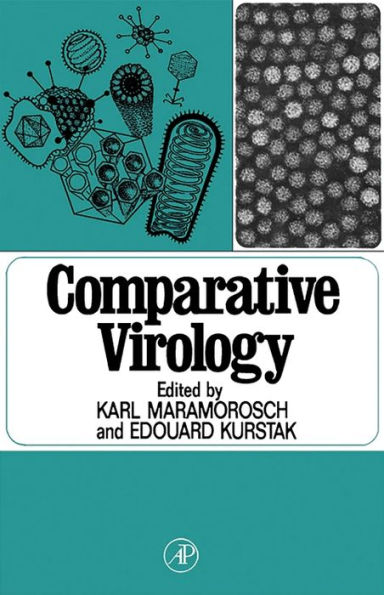Comparative Virology
Comparative Virology provides an integrated comparison of viruses, based on their chemical and morphological characteristics. These descriptions will not only give the reader a background but also a detailed analysis of the various groups. In some instances the groups are still host related, as in the case of bacteriophages and polyhedral insect viruses. In others, for instance in pox viruses, the group comprises viruses of vertebrates and invertebrates. The hosts of the bacilliform Rhabdovirales range from man and other warm-blooded vertebrates through invertebrate animals to plants. A special chapter is devoted to viruses devoid of protein—a group that is of great interest and that has only recently been recognized. Since there is historical and practical interest in écologie groupings, such as arboviruses and oncogenic viruses, chapters on such groups have also been included. The book opens with a discussion on the classification of viruses. Chapters dealing with DNA viruses and RNA viruses follow, and the ecologically and disease-oriented groups complete the volume. It is hoped that ""Comparative Virology"" will help bring unity to the science of virology through the comparative approach that is not dependent on virus-host interactions. The combined efforts of eminent contributors to discuss and evaluate new information will hopefully benefit all who are interested in virology
1000720999
Comparative Virology
Comparative Virology provides an integrated comparison of viruses, based on their chemical and morphological characteristics. These descriptions will not only give the reader a background but also a detailed analysis of the various groups. In some instances the groups are still host related, as in the case of bacteriophages and polyhedral insect viruses. In others, for instance in pox viruses, the group comprises viruses of vertebrates and invertebrates. The hosts of the bacilliform Rhabdovirales range from man and other warm-blooded vertebrates through invertebrate animals to plants. A special chapter is devoted to viruses devoid of protein—a group that is of great interest and that has only recently been recognized. Since there is historical and practical interest in écologie groupings, such as arboviruses and oncogenic viruses, chapters on such groups have also been included. The book opens with a discussion on the classification of viruses. Chapters dealing with DNA viruses and RNA viruses follow, and the ecologically and disease-oriented groups complete the volume. It is hoped that ""Comparative Virology"" will help bring unity to the science of virology through the comparative approach that is not dependent on virus-host interactions. The combined efforts of eminent contributors to discuss and evaluate new information will hopefully benefit all who are interested in virology
93.95
In Stock
5
1

Comparative Virology
600
Comparative Virology
600
93.95
In Stock

Product Details
| ISBN-13: | 9781483269696 |
|---|---|
| Publisher: | Elsevier Science & Technology Books |
| Publication date: | 06/28/2014 |
| Sold by: | Barnes & Noble |
| Format: | eBook |
| Pages: | 600 |
| File size: | 25 MB |
| Note: | This product may take a few minutes to download. |
About the Author
From the B&N Reads Blog
